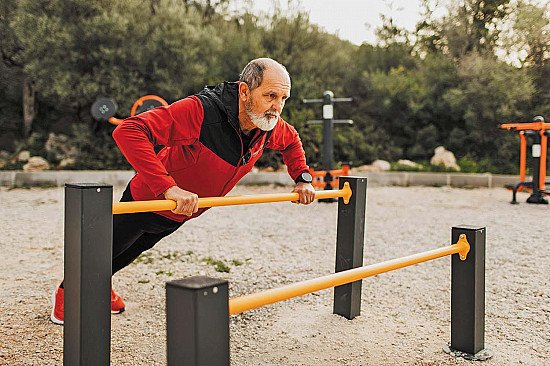[ad_1]

Everyone has exercises that they do reluctantly or even avoid. “Even though movements are beneficial, you hate them because they can be difficult or too demanding,” says Vijay A. Daryanani, a certified personal trainer and physical therapist at Harvard-affiliated Spaulding Rehabilitation. “However, by modifying the movements and adjusting your expectations, you can begin to enjoy the exercises you usually struggle with.” Here’s a look at three common exercises that men often hate, why they should do them, and how to learn to love them.
Squats
Squats activate all major leg muscles at once: the quadriceps and hamstrings (thighs), the glutes (butt), and the gastrocnemius, soleus, and plantaris (calves). “Squats can help you develop and maintain a stronger lower body, making overall movements easier and safer and allowing you to stay active and avoid injury,” says Daryanani.
Why do you hate them. Since most men suffer from tight hip flexors and hamstrings, squatting can be difficult and if done incorrectly, squats can cause back pain.
Learn to love them. Daryanani points out that you’re essentially performing a squat every time you sit and stand. “Therefore, you can get the same benefits as regular squats by performing sit-to-stand exercises,” he says. “They provide support and are easy to do, allowing you to avoid awkward movements that could put pressure on your back.”
Here’s how to do it: Sit in a chair with your feet hip-width apart and place your hands on your thighs. Contract your abdominal muscles. Exhale as you stand up slowly. Then slowly sit up in a controlled movement. Take three to five seconds to stand up and sit down, being careful not to use momentum.
To make it easier, use a chair with armrests and place your hands on the armrests of the chair when you stand up. For a challenge, do the exercise with your arms crossed in front of your chest, hold a dumbbell or heavy book with both hands at chest level, or hold a dumbbell in each hand. Using a lower chair can also increase the difficulty.
Push ups
Old-fashioned push-ups are a versatile exercise that engages your body from top to bottom using your arms, chest, core, hips and legs.
Why do you hate them. Push-ups are often used as a measure of strength and vitality. “If you can’t do much, or if you’re struggling, you may view that as a sign of weakness, so you avoid even trying,” says Daryanani. In addition, push-ups have long been considered in military and gymnastics classes as a punishment, so the exercise has an aura of negativity.
Learn to love them. “Push-ups can easily be modified in multiple ways so anyone can do them with confidence,” says Daryanani. For example, start with push-ups performed at an angle against a wall or kitchen counter. “By standing closer or further away from the wall or counter and changing the angle, you can increase or decrease the difficulty,” says Daryanani. “This way you can focus on engaging the muscles and performing with better form.” When you’re ready to move to the floor, start with push-ups on your knees.
Eventually you can work up to regular push-ups. And never worry about how many things you can do at once. “Proper execution and form, where you can feel your muscles fully engaged, is what’s important,” says Daryanani. “It’s always better to do five good push-ups than ten bad ones.”
Bridges
Another great all-in-one move, the bridge works your glutes, back, and core, where some of your strongest muscles are located. “You engage these muscles every time you turn over, leave the ground, or lift heavy objects,” says Daryanani.
To perform a bridge, lie on your back with your knees bent and your feet flat on the floor, hip-width apart and parallel to each other. Place your arms at your sides, palms down. Relax your shoulders against the floor. Squeeze your glutes, then lift your hips off the floor as high as possible. Hold the position for five seconds, then return to the starting position.
Why do you hate them. Bridges may seem awkward at first, especially if you have tight or weak core or back muscles. “Plus, it’s not something that individuals are used to doing regularly outside of a yoga class,” says Daryanani.
Learn to love them. If you can’t lift your hips very high or if arching your back is too difficult, place bolsters or pillows under your back for support. “This way you can hold the pose longer and reduce the risk of straining your back,” says Daryanani. Another option is to lift your hips just high enough to engage your muscles, which may be only a few inches long.
Image: © Oleg Breslavtsev/Getty Images
[ad_2]
Source link
